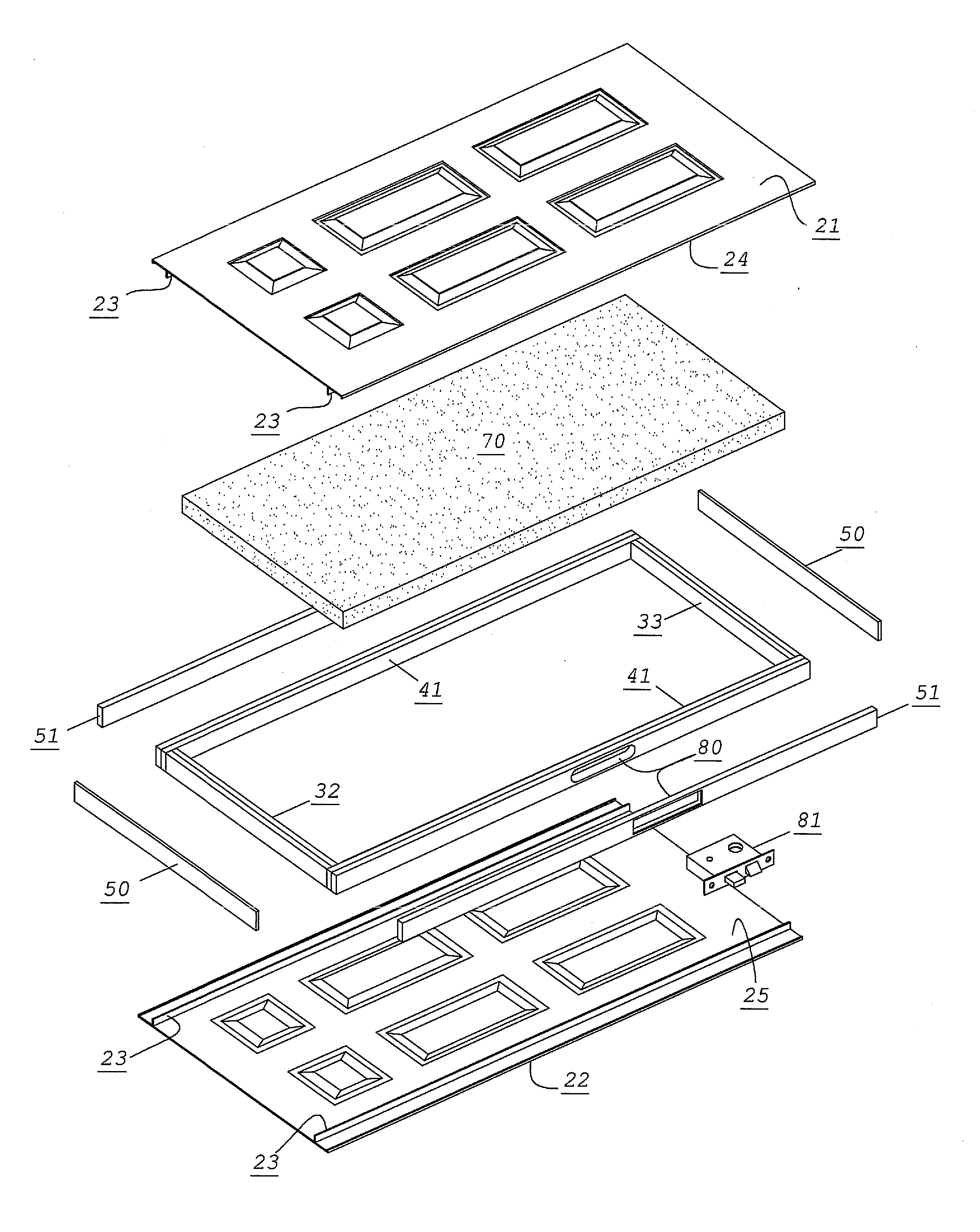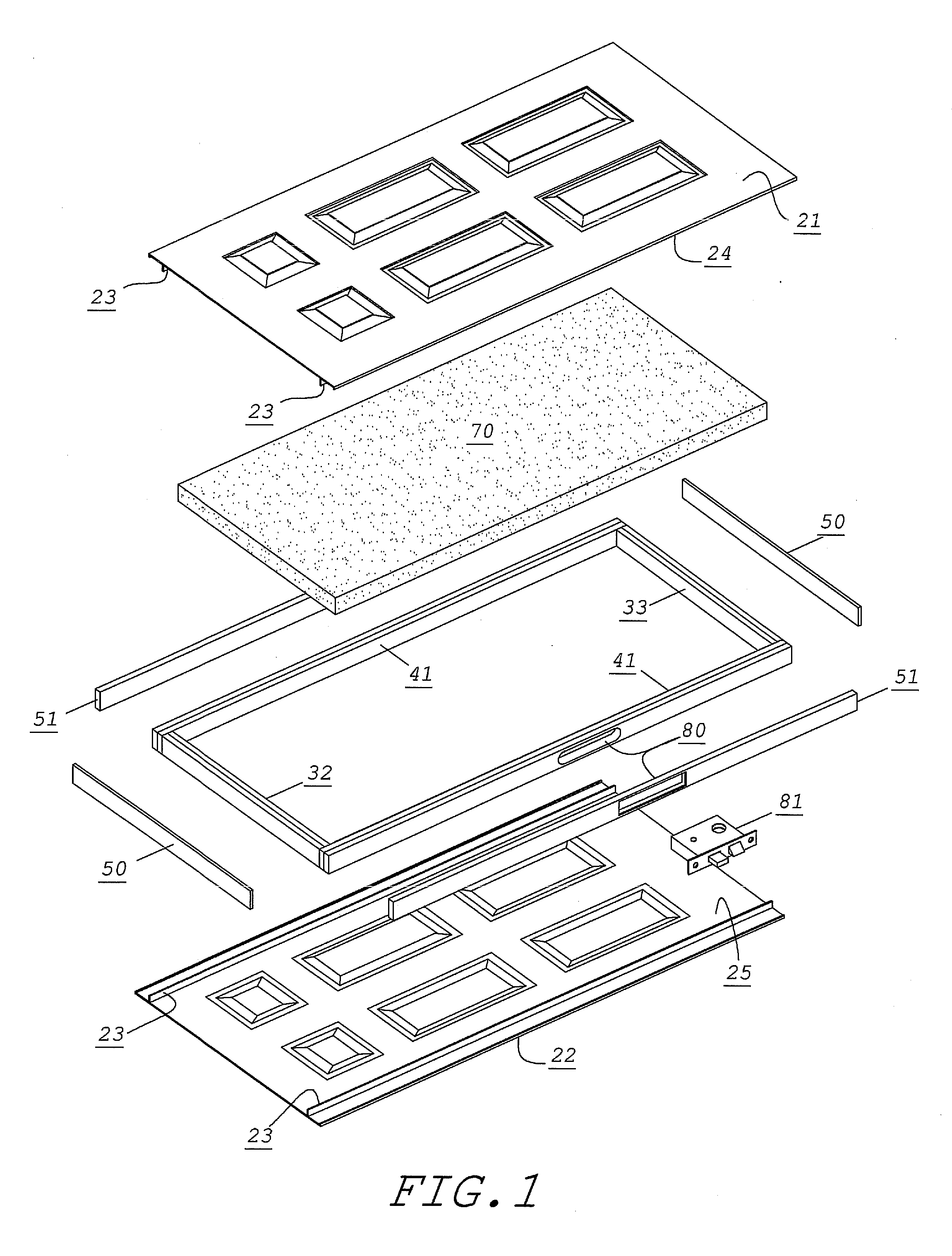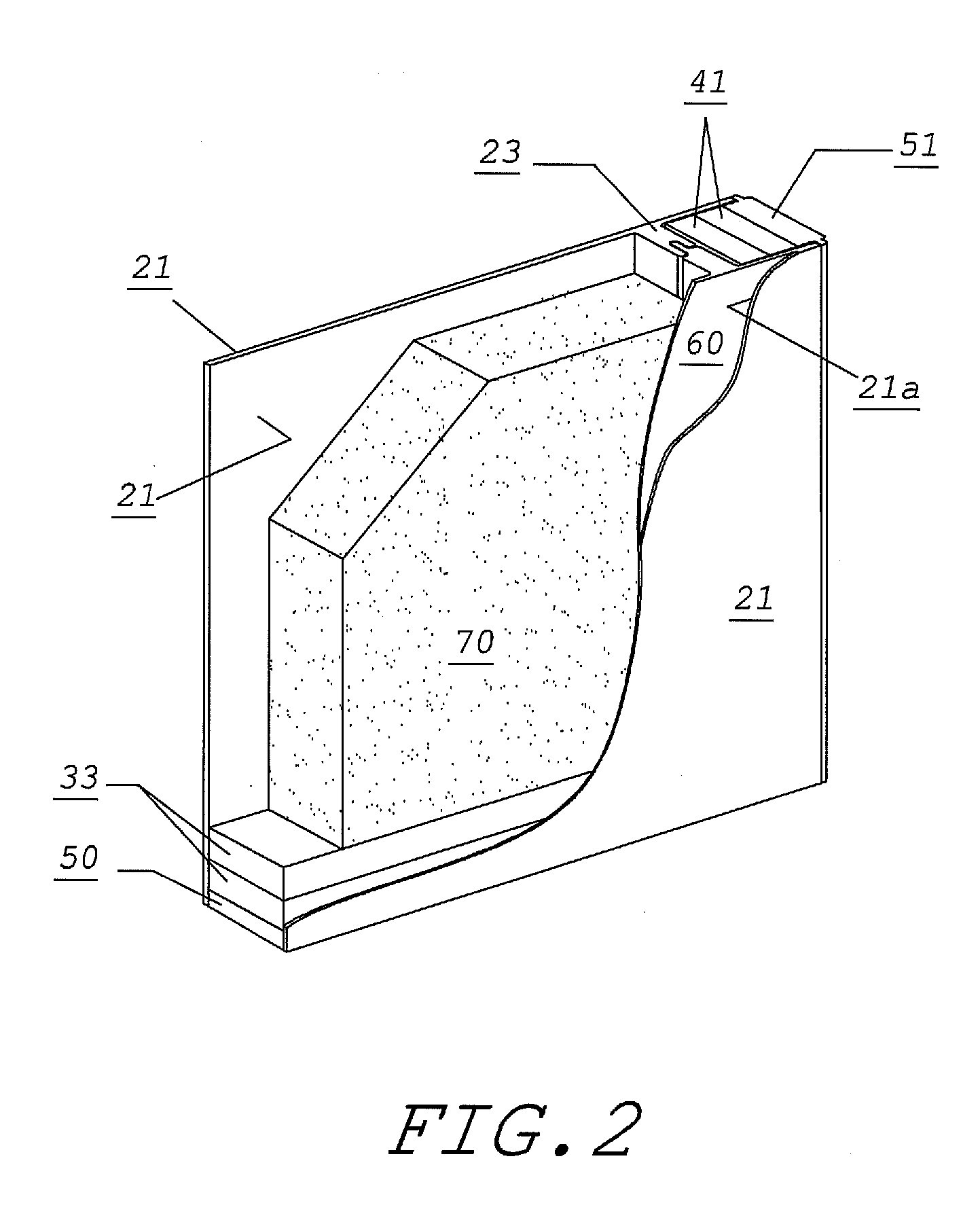Synthetic door with improved fire resistance
- Summary
- Abstract
- Description
- Claims
- Application Information
AI Technical Summary
Benefits of technology
Problems solved by technology
Method used
Image
Examples
Embodiment Construction
[0019]An exploded perspective of novel synthetic door 20 is shown in FIG. 1. As can be seen this door is constructed with out the typical stiles. Constructed of a top skin 21 and a bottom skin 22, both of which have integral projections 23 extending perpendicularly to their respective interior surfaces 24 and 25 and extending lengthwise adjacent to the vertical edges of these skins, the skins are connected through these projections and can be seen in FIG. 4.
[0020]The connection of the skins is shown in FIG. 3. Typically he distal ends 26 of the projections 23 on one sheet will have a rib 27 and the distal ends of the projections on the other sheet will have a groove 28 for receiving the rib. As a result of these configurations the skins can be assembled using this interlock on the distal ends of the projections without a conventional stile. Obviously, other configurations can be used to interlock the top and bottom skins at the distal ends of the projections.
[0021]Referring to FIG. ...
PUM
| Property | Measurement | Unit |
|---|---|---|
| Thickness | aaaaa | aaaaa |
| Thickness | aaaaa | aaaaa |
| Thickness | aaaaa | aaaaa |
Abstract
Description
Claims
Application Information
 Login to View More
Login to View More - R&D
- Intellectual Property
- Life Sciences
- Materials
- Tech Scout
- Unparalleled Data Quality
- Higher Quality Content
- 60% Fewer Hallucinations
Browse by: Latest US Patents, China's latest patents, Technical Efficacy Thesaurus, Application Domain, Technology Topic, Popular Technical Reports.
© 2025 PatSnap. All rights reserved.Legal|Privacy policy|Modern Slavery Act Transparency Statement|Sitemap|About US| Contact US: help@patsnap.com



